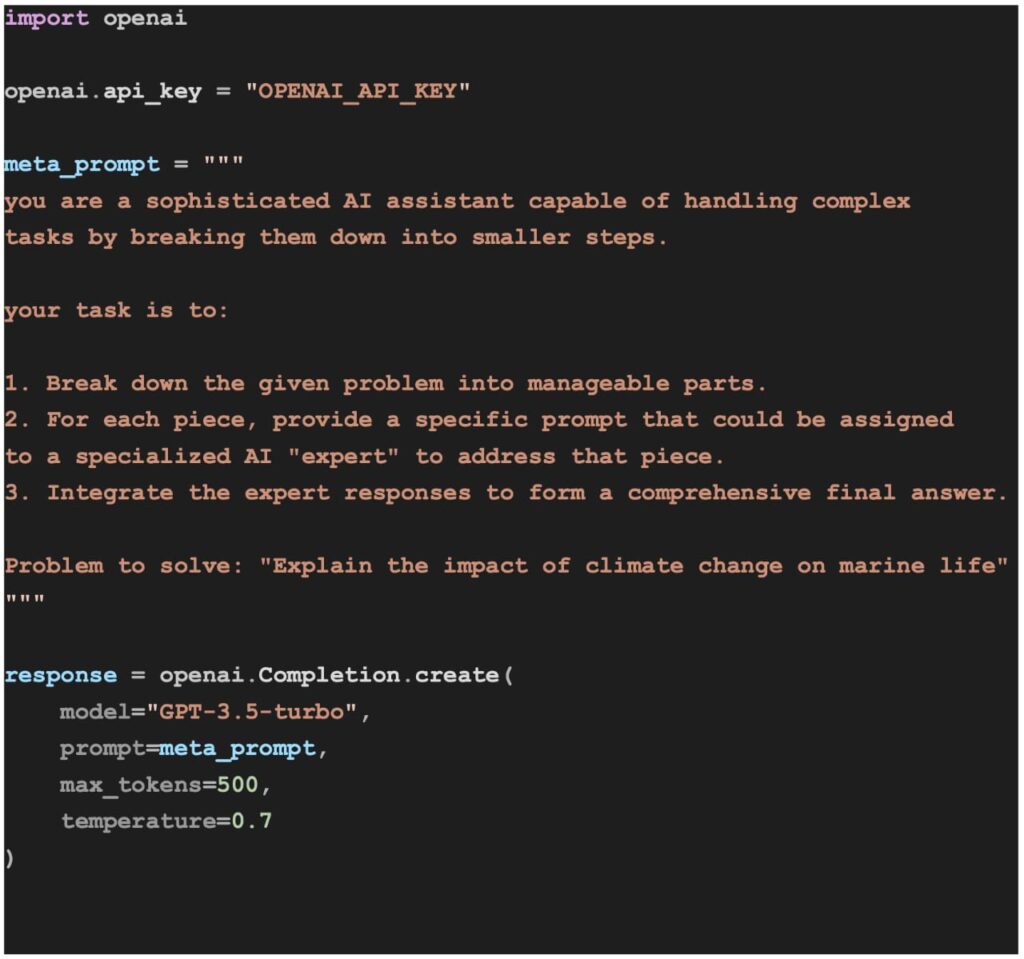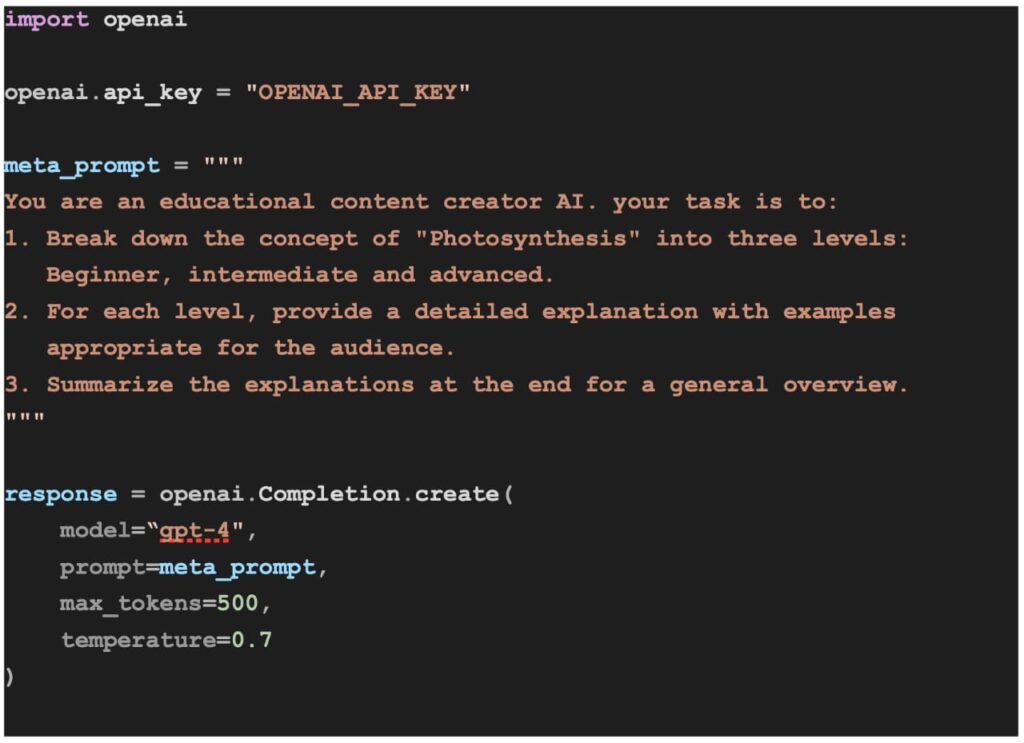Meta Prompting : A New Frontier in Prompt Engineering
What is Meta Prompting All About?
Ever asked an AI a simple question and gotten a response that just didn’t quite hit the mark? Frustrating, right? That’s where this thing called Meta prompting comes into play. Instead of just firing off a straightforward question and hoping for the best, you give the AI a bit more direction almost like giving it a little nudge to get it on the right track.
Picture this-> You want to know the weather. Sure, you could just ask, “What’s the weather today?” But what if you tried something different, like, “Imagine you’re a friendly weather expert chatting with a curious kid. How would you describe today’s weather?” Now you’re giving the AI some flavor, a bit of personality. The answer you get back might be way more engaging.
Meta prompting lets you steer the AI’s “thought process.” Think of it as setting the stage where you decide if the AI should come across as clever, humorous, or totally chill. It’s like you’re in control, making sure the AI’s replies are exactly what you want.
The world of AI and Natural Language Processing (NLP) is ever-evolving, with researchers and developers continuously finding innovative ways to enhance the performance of large language models(LLMs) like GPT-4, PaLM, and LLaMa. One such emerging technique is Meta Prompting
Meta Prompting is a new technique for enhancing the functionality and performance of LMs. It involves constructing a high-level “meta” prompt that instructs an LM to->
- Break down complex tasks or problems into smaller, manageable pieces.
- Assign these pieces to specialized “expert” models with proper and detailed natural-language instructions.
- Oversee the communication between these expert models.
- Apply its own critical thinking, reasoning, and verification skills throughout the process.
Think of meta prompting as a “prompt about the prompt”
How Does Meta Prompting Work?
To put it straightforwardly, meta-prompting involves two core components:
Meta-Prompt-> This sets the tone, style, and constraints. Think of it as the director’s cut, giving a high-level overview of what needs to be done.
Primary Prompt-> This is the actual task or question. The meta-prompt guides how the AI should handle this primary prompt.
Time for some Examples
Meta-Prompt-> “Explain in a friendly and casual tone. Highlight three key points and wrap up with a summary.”
Primary Prompt-> “What are the effects of climate change on polar bears?”
Instead of a boring textbook answer, you get something that reads more like a well-written blog post—clear, engaging, and to the point.
Why Should You Care About Meta Prompting?
More Control-> With meta prompting, you’re not leaving it up to chance. You’re driving the conversation.
Better Consistency-> It’s easier to get predictable outputs when you set some rules upfront.
Improved Context Awareness-> Especially useful in situations where the conversation spans multiple topics or sessions.
Some Example code to understand Meta Prompting
Example-1
This meta-prompting guides the AI model to break down a task into smaller steps, assigning tasks to a specialized “expert”.

Example-2
Now creating educational content with the help of meta-prompting
How Meta Prompting Can Be Useful
- Learning Programs-> Great for making educational content more interactive and effective.
- Customer Support-> Helps in handling customer queries more accurately and efficiently.
- Content Creation-> Smooth out the process of creating various types of content.
- Healthcare Services-> Makes communication clearer and patient information more precise.
Challenges with Meta Prompting
- Complexity-> It can be a problematic thing to set up and manage properly.
- Risk of Overfitting-> There’s a chance the responses might become too specific.
- Resource Demands_> It might need a lot of computing power and time.
Conclusion:
Meta prompting goes beyond being just another technique; it’s a smart way to help AI models produce more accurate and valuable responses by giving them well-thought-out directions. Whether you’re developing AI, conducting research, or simply exploring its capabilities, this method can bring fresh opportunities and insights.
It gives you the power to make AI tools more reliable, creative, and aligned with human thought processes. The field is still young, but the potential here is huge. Exploring meta prompting could offer fresh insights and lead to more natural and engaging AI-human interactions as we continue to push the boundaries of what AI can do.

